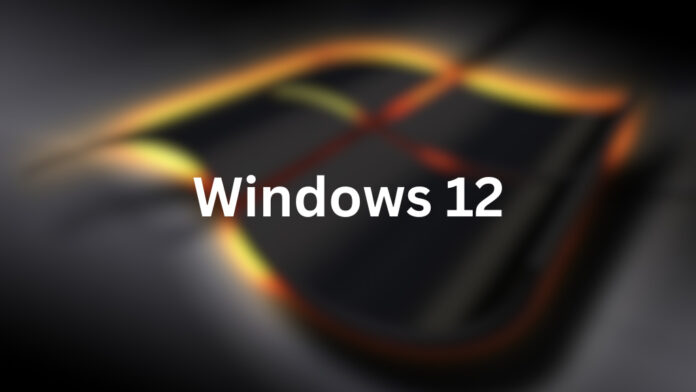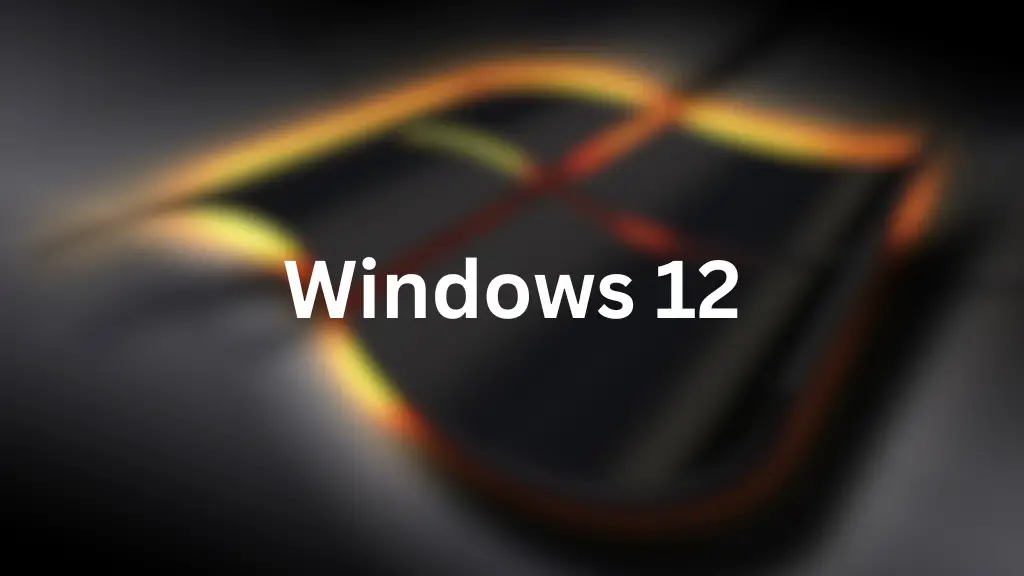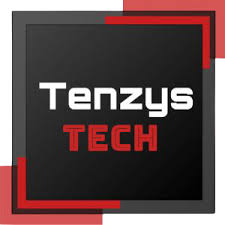As per the information spread in the surrounding, Windows 12 is the upcoming version of Microsoft’s operating system, which has not yet received an official announcement from the company. However, there are several theories and educated estimates about what it might contain.
The redesigned Start Menu in Windows 12 is among the significant changes. The Start Menu features a simpler appearance with fewer tiles in a video that depicts what it might be like. More emphasis is placed on the programs you use and the most recent files you’ve worked on. Also enhanced is the Widgets board, which debuted with Windows 11. Widgets are now easier to reposition on your desktop.
Other innovations that might be included in Windows 12 include a revamped taskbar, a user-customizable interface, and improved performance. The program you use to view and manage your files, File Explorer, is also being updated. There will be a significant update from what we now have.
Rumour has it that Windows 12 will have some intriguing new features. One of them is the ability to alter the Windows experience by selecting the apps and features you want. It’s even possible that you could design your own start menu.
Windows 12 may provide you with additional privacy control, which is another cool feature. You may control which applications have access to your location information or opt not to view personalized advertisements.
You should find it simpler to access your files and apps wherever you are with Windows 12. For instance, you might easily begin working on a document on your laptop and then finish it on your phone.
In addition to these adjustments, Windows 12 will likely have a new, contemporary design. New and enhanced features will be present, such as an enhanced taskbar, start menu, and file explorer. Additionally, it will be better integrated with Microsoft’s cloud solutions, like OneDrive and Office 365, making it simpler for you to collaborate and work online.
Finally, Windows 12 will give your security and privacy first priority. Your data’s security and the confidentiality of your personal information are important to Microsoft.
Evolution of Windows
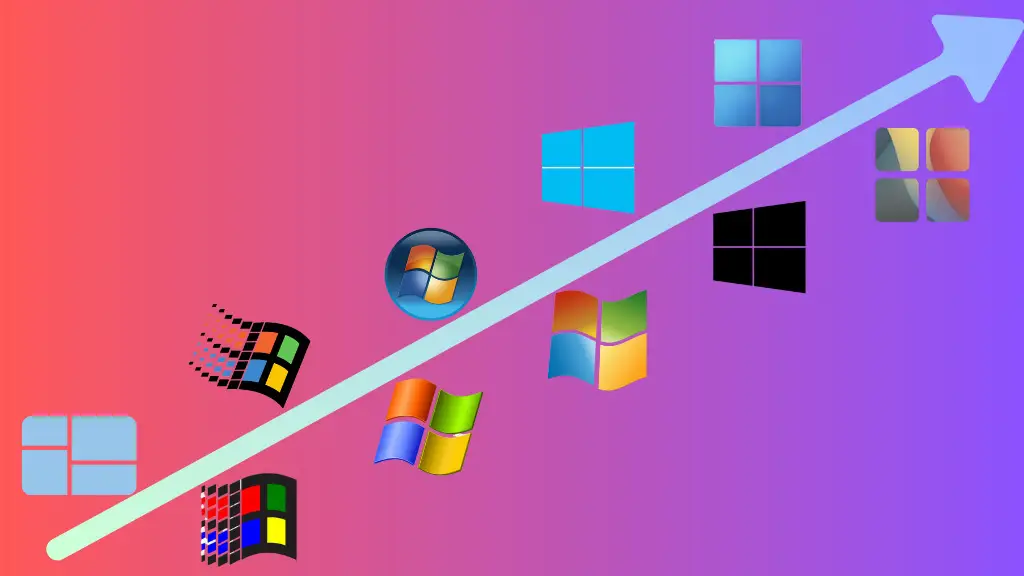
Windows 1.0: Microsoft released Windows 1.0 in 1985. It served as MS-DOS’s graphical user interface but was not an entire operating system.
Windows 2.0: A few years later, Windows 2.0 was released, bringing with it exciting upgrades. It was made simpler to use by adding features like overlapping windows and a start menu.
Windows 3.0: Windows 3.0 marked a significant turning point in 1990. This version, which marked a significant turning point for Windows, gained enormous popularity among corporations and common consumers.
Windows 3.1: With the introduction of Windows 3.1 in 1992, the previous version was improved with new capabilities like TrueType fonts and a practical file manager.
Windows 95: Then, in 1995, came the revolutionary release of Windows 95. With the addition of the taskbar, start menu, and plug-and-play support, Windows underwent a full transformation that altered how we interacted with it.
Windows 98: Building on the success of Windows 95, Windows 98 was released in 1998. It improved user ease by including Internet Explorer 4.0 and USB device support.
Windows 2000: The new millennium began with the release of Windows 2000 in the year 2000. With features like Active Directory and support for strong 64-bit CPUs, it is tailored primarily to the needs of enterprises.
Windows XP: Windows XP became a global phenomenon in 2001. Many individuals still adore it today despite its enormous popularity.
Windows Vista: In 2007, Microsoft released Windows Vista, aiming for a total revamp. It was criticized, nevertheless, for having performance and compatibility problems.
Windows 7: After learning from the faults of Vista, Windows 7 was released in 2009 and quickly gained popularity. Its enhancements and tweaks were well received.
Windows 8: With a new appearance, Windows 8 upended the market in 2012. In order to keep up with the rapidly evolving state of technology, it debuted a new interface created for touchscreen gadgets.
Windows 10: Finally, Windows 10 was released in 2015. It was an improved version of Windows 8 that supported touchscreen and desktop devices and brought back the cherished start menu.
Windows has advanced to become the most widely used desktop operating system in the world via continuous development and improvement.
Windows 11: The following version of the Windows operating system after Windows 10 is Windows 11. It was released in 2021 and has a redesigned, centered taskbar and Start menu. The user interface is also drastically changed by it.
One of the important updates is the availability of Android app downloads through the Amazon Appstore. Security is additionally enhanced via Secure Boot, a hardware-based security chip, and other changes in Windows 11. Microsoft plans to keep enhancing and growing Windows 11 in the following years.
Also Read: Windows 11 vs Windows 10: Complete Comparison with Benchmarks
Windows 12: Looking forward, Windows 12 strives to be cutting-edge, safe, and user-friendly. It has a contemporary design, greater security safeguards, cloud integration for simple file access, and artificial intelligence for enhanced user experience.
Overall, Windows 12 is a stride towards the future, building on prior successes and resolving issues to make Windows a dependable platform for consumers.
Enhanced User Interface and Experience
Windows 12 will offer some significant visual and tactile enhancements. Following the most recent trends in interface design, the design will be more contemporary and fashionable. With larger buttons and improved touch-responsive iconography, it will be simpler to operate on touchscreen devices like tablets. You’ll also have more control over its appearance, giving you the freedom to change it in any way you like.
But there’s more! Also smarter will be Windows 12. To improve your experience even more, it will make use of artificial intelligence. For instance, it might recommend settings and apps that you’ll find helpful or assist you in troubleshooting issues when they arise.
All of these modifications are intended to improve the aesthetics and usability of Windows 12. It will be a fantastic operating system whether you use it on a touchscreen device or a normal computer.
The Start menu, taskbar, and desktop improvements in Windows 12 are going to be quite great. With touchscreens, the Start menu will be simpler to use and more customizable. Additionally, it will function better with online services like OneDrive and Microsoft Office 365.
The taskbar will be enhanced to be more straightforward and effective. There will be more options for customizing it, such as concealing it or only displaying your favorite apps.
The desktop will appear more attractive and contemporary. You can add widgets and change the colors to make it your own.
With these upgrades, Windows 12 will be easier to use and more suitable for touchscreen devices.
There are several intriguing rumors regarding UI (user interface) changes in Windows 12. With rounded sides and a frosted glass background, it can have a more contemporary and fashionable appearance. Additionally, you may have more choices to tailor the UI to your preferences.
The notification center may be improved to make it more user-friendly and informative. The settings app may also get a redesign, making it easier to use and manage.
A new file explorer that is more contemporary and effective for managing your files could be introduced with Windows 12. A more organized and compact system tray might be created, where icons for various settings are located.
It’s exciting to think that Windows 12 may bring new UI interaction methods, like gestures and voice commands.
But for now, these alterations are only rumors; we won’t know for sure how the UI in Windows 12 will look until Microsoft makes public pronouncements.
Performance and Speed Enhancements
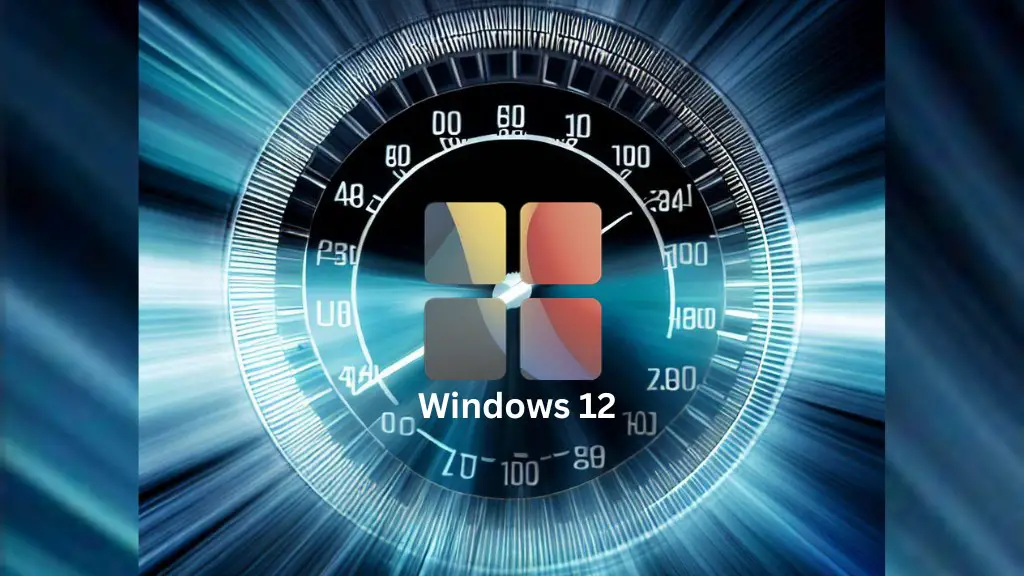
Windows 12 attempts to speed up and optimize your PC in a number of ways. In order to make room for your programs and processes, it intends to use memory more wisely. As a result, your computer will be able to operate more freely.
Windows 12 wants to get you up and running as soon as you turn on your computer. This will be accomplished by speeding up the startup and loading fewer objects at once.
Additionally, Windows 12 aims to enhance your computer’s multitasking capabilities. In order to make everything work more swiftly and smoothly, it will be better at handling various programs and processes.
Windows 12 also prioritizes security for your machine over speed. In order to defend against cyberattacks, it intends to include additional security features. For instance, it might develop a safe environment for using untrusted programs while maintaining the security of your computer.
Even new features for Windows 12 that improve speed and performance could be included. It might be able to manage electricity more effectively, organize files in a different way, and connect to the internet more quickly.
Your computer should run more quickly and responsively thanks to Windows 12. Because it intends to use memory more effectively, your apps and processes will have access to additional RAM. This should lead to quicker app launches, quicker boot times, and an improved overall experience.
Windows 12 attempts to improve the starting process so that you can use your computer more quickly. The startup time will be substantially shorter because less stuff will be loaded at once, especially on older devices.
Additionally, Windows 12 seeks to enhance multitasking. By handling numerous apps and processes better, it will speed up app switching and enhance overall performance when using many apps at once.
Your computer’s performance and responsiveness will increase thanks to these changes in Windows 12. It will start up more rapidly, open applications more swiftly, and manage many tasks with ease. However, keep in mind that these are merely hypothetical capabilities, and we’ll need official Microsoft approval before we can be certain of anything.
Windows 12 wants to increase resource management and productivity on your PC. Your computer might become quicker and more responsive if artificial intelligence (AI) is used to manage resources wisely, such as memory and power. Additionally, Windows 12 may be hardware-specifically optimized to make the most of your device’s capabilities. Better performance is the result, especially on more recent gadgets with cutting-edge capabilities.
Windows 12 might simplify the software and get rid of features that aren’t necessary, which would increase productivity. The operating system grows leaner and consumes fewer resources by getting rid of components that are not absolutely necessary. Better responsiveness and overall performance are the results of this.
With these improvements, Windows 12 hopes to offer a quicker, more effective, and more streamlined experience. Your computer might start up more quickly, open apps more quickly, and carry out tasks more efficiently. Remember that, these are only potential features and we’ll need formal confirmation from Microsoft before we can be sure.
New Features and Productivity Enhancements
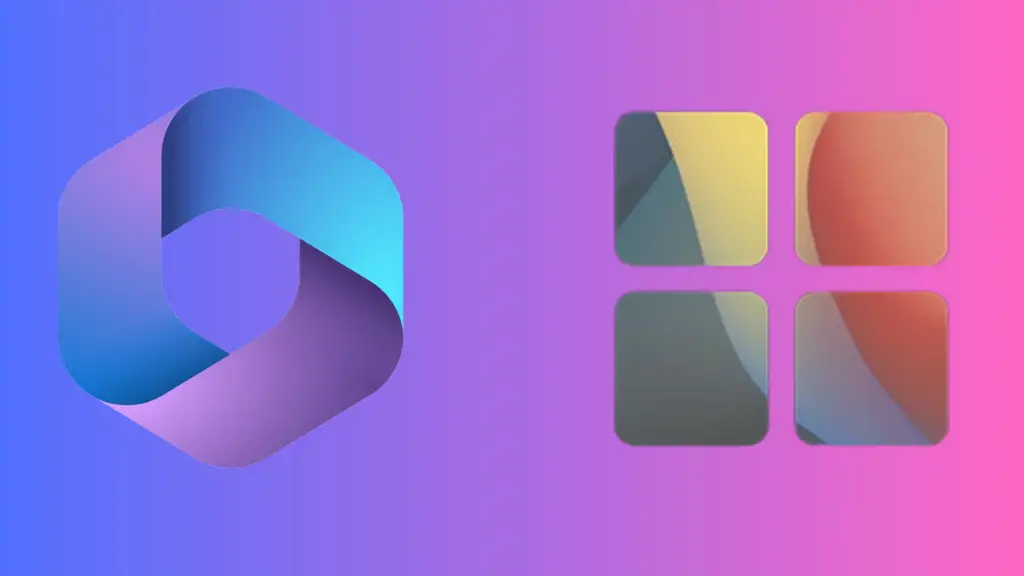
Windows 12 is anticipated to bring innovative new features that will enhance your computer experience. The recent announcement of Microsoft 365 Copilot for Windows 11 from Microsoft at the Build 2023 conference will enhance the productivity of apps with the help of Artificial Intelligence. So there is a high chance to get AI-Driven enhanced productivity support in Windows 12 as well.
Also, a revamped Start menu that is more touch-friendly and adaptable is one of the anticipated enhancements. This implies that you can organize and customize your apps any way you choose. It’s also rumored that the taskbar will change, becoming more streamlined and effective. It might display fewer icons by default, giving you a look that is clearer and less crowded.
The desktop in Windows 12 is anticipated to be redesigned as well to add a dash of contemporary and elegance. You might be able to select other color schemes and view more details about the programs you’re using. A frosted glass background and other aesthetic components like rounded corners will improve Windows 12’s overall look and feel, giving it a more modern and fashionable appearance.
It is said that Windows 12 offers enhanced memory management, which will result in more effective utilization of system memory. With more RAM available for your apps and processes as a result of this optimization, performance will improve and speeds will increase. Additionally, it’s rumored that Windows 12 will speed up startup times. You can speed up boot times and get to work more quickly by streamlining the starting process and loading fewer programs and services.
In Windows 12, multitasking will also be improved. The operating system will be more adept at controlling numerous apps and processes at once, resulting in seamless app switching and improved responsiveness. You’ll be able to operate more productively and effectively as a result.
Security is of the utmost importance, and Windows 12 is said to include improved security capabilities. An additional layer of defense against potential cyber threats will be provided by the implementation of a sandboxed environment for running untrusted programs. Additionally, the operating system kernel will get better security features, making the computing environment safer.
New improvements for Windows 12 may be added to improve system speed and performance even more. A new power management system that aids in maximizing battery life and optimizing power use may be one of these. To improve the way data is stored and retrieved and speed up file operations, a new file system might also be implemented. A new networking stack may also improve network performance, enabling quicker and more dependable connections.
Windows 12 attempts to offer a number of improvements in terms of productivity. A virtual desktop system that enables you to organize and transition between numerous desktop locations may be introduced as multitasking capabilities are improved. It will be simpler to arrange and use numerous apps at once thanks to improved app snapping. Additionally, Windows 12 might include brand-new productivity applications that are created to be simple to use and productive, assisting you in getting more done.
According to rumors, the Windows Store may get a makeover, possibly including more options for searching and installing software from different sources as well as a new look. Windows 12 may also provide new native programs with better usability, such as music and video players, allowing for a more seamless media experience.
Windows 12’s anticipated new functions, productivity upgrades, and rumored improvements carry the promise of a better user experience and the delivery of a more contemporary, effective, and safe operating system. While the arrival of these features in Windows 12 is eagerly awaited, it’s vital to keep in mind that they are based on rumors and require formal confirmation from Microsoft.
Enhanced Security and Privacy
In today’s operating systems, security and privacy are of utmost importance. It’s critical to safeguard our personal information from unauthorized access as our lives become more digital. Operating systems require robust security capabilities to protect them from viruses, cyberattacks, and other dangers. In addition, privacy needs to be given top priority, giving individuals discretion over how their data is gathered and used.
Potential security features and improvements in Windows 12 are designed to keep users safe. To protect user data, for instance, greater encryption algorithms might be used. Hackers would find it more difficult to access and decode personal data as a result. Additionally, Windows 12 might have security tools like a firewall and a virus scanner as part of its integrated malware defense. These would aid users in protecting themselves against dangerous software.
A sandboxed environment, which isolates untrusted apps from the rest of the system, is another rumored security feature. By doing this, it is made sure that any possible harm brought on by these programs is minimal and confined. To stop intruders from exploiting holes and seizing control of the system, the security of the operating system kernel may also be enhanced.
Another important feature of Windows 12 is privacy. User control over their data will likely increase as a result of rumored additions. Users may be able to choose not to have their personal data collected or to have it deleted with improved data management options. To help users understand what information is being gathered and how it is used, privacy settings may need to be made more transparent. Additionally, Windows 12 might provide improved data security for users by integrating safeguards like encryption and data anonymization.
Windows 12 strives to give consumers a safer and more protected digital environment by putting security and privacy first. These possible security improvements and privacy-focused updates aim to provide users with more power over their data and guarantee the security of their personal information. It’s crucial to remember that these features are based on rumors, therefore Microsoft must formally confirm their presence in Windows 12 before they can be considered official.
Compatibility and Integration
Users must take compatibility between Windows 12 and their current applications and hardware into account. Microsoft makes an effort to preserve compatibility in order to enable a smooth transition. However, it’s likely that some software or hardware may have trouble working with the new operating system. In order to better comprehend it, let’s talk about it in detail:
#1: Compatibility between Windows 12 and existing software/hardware
People frequently worry about whether their existing software and hardware will function with a new version of Windows, like Windows 12. Microsoft normally guarantees compatibility, but there may be instances where specific devices or apps have problems working with the new operating system.
#2: Potential measures taken by Microsoft to ensure a smooth transition for users
Microsoft can take the following actions to ensure a seamless transition to Windows 12:
Compatibility checker: Microsoft may offer a tool to determine whether your present hardware and applications are compatible with Windows 12 (compatibility checker). This allows you to be prepared in case any problems do occur.
Updates for compatibility: If there are known compatibility issues, Microsoft may provide updates created especially to solve them. These updates assist in resolving issues between the new operating system and pre-existing hardware or software.
Support for drivers: Microsoft can provide drivers for newly released or upgraded hardware that requires particular software interfaces to function effectively with Windows 12. By doing this, you can keep using your devices without encountering any compatibility issues.
#3: Anticipated integration with other Microsoft services or platforms
OneDrive, Office 365, and Xbox are just a few of the Microsoft services and platforms that Windows 12 is anticipated to work with more fluidly. This makes it simpler for you to access your files and applications on many devices. Additionally, it might improve Windows device gaming, improving the fun factor for players.
These actions and integration initiatives demonstrate Microsoft’s dedication to making the switch to Windows 12 as seamless as possible. Along with delivering seamless integration with well-known Microsoft services and platforms, they seek to guarantee compatibility with already-in-use software and hardware. The particular measures and integration in Windows 12 must first receive official confirmation from Microsoft, therefore it’s crucial to keep in mind that these specifics are only predictions at this point.
Release Date and Availability
Windows 12 has not yet received an official release date from Microsoft. It may, however, be released in 2024, according to certain reports. Microsoft has reportedly been working on Windows 12 since 2022 with a release targeted for the second part of 2024, according to Windows Central. It might be released as soon as March 2024, according to another report from Deskmodder. Additionally, the release may occur in waves, allowing some users to receive it before others. Although it’s still too early to be definite, Windows 12 will be introduced at some point. Based on the information now available, it is most likely that it will be accessible in 2024.
It will be possible for current Windows 10 or Windows 11 users to update to Windows 12, and it will be provided as a free upgrade. Similar to how you upgraded to Windows 11, so will the process of upgrading to Windows 12. You must make sure your PC complies with the compatibility requirements and has enough storage space before you can complete the upgrade.
You will be given the option to upgrade to Windows 12 for free if you are currently running Windows 10. Similar to this, if you have already updated to Windows 11, you can go freely to Windows 12. It’s crucial to confirm that your PC satisfies the system requirements and has enough storage space to support the new operating system, just like with prior upgrades.
You can opt to carry out a clean install if you wish to start over with Windows 12 and would prefer a new beginning. However, keep in mind that carrying out a clean install may completely destroy your data; as a result, it is essential to back up your key files before choosing this option.
Microsoft is anticipated to provide pre-release programs and insider previews prior to the introduction of Windows 12. Users can test early versions of Windows 12 using these programs and provide Microsoft with useful input. You can use Windows 12 in a hands-on environment before it is made generally accessible by taking part in these programs. You must register on the Microsoft website and follow the procedures there in order to participate in these programs.
One such program that lets consumers test out early versions of Windows 12 is the Windows Insider Programme. You may gain access to early builds and test the fresh features and upgrades by signing up to be a Windows Insider. You can actively participate in the development of this program by offering comments and reporting any problems you run into.
Microsoft is also anticipated to introduce the Windows 12 Release Preview Programme. You will be able to test the Windows 12 final release version through this program before it is formally released to the public. You can test the operating system when it’s almost finished and provide Microsoft input for any last-minute adjustments.
These beta versions and insider previews show how dedicated Microsoft is to making sure that Windows 12 lives up to users’ requirements and expectations. They provide you the chance to discover the latest features and improvements while also enabling you to improve the operating system. You can participate in the development of Windows 12 and influence its ultimate form by enrolling in these programs.
Also Read: Windows Copilot: Redefining How We Interact with Our PCs through AI Technology
Conclusion
In sum, even though Microsoft hasn’t made an official announcement about Windows 12, there are a lot of rumors and anticipation surrounding its prospective features. A new taskbar, revised Start Menu, and enhanced user interface are all expected with the operating system. Additionally, Windows 12 may include additional customization choices and improve multitasking, performance, and security. It is also anticipated to integrate with other Microsoft platforms and services, facilitating user access to files and online collaboration.
Microsoft is likely to take steps to facilitate a smooth transition for customers, including providing compatibility checkers and delivering updates or drivers if necessary. Compatibility with existing applications and hardware is essential. Before Windows 12 is officially released, customers will be able to test it out and provide Microsoft feedback through pre-release programs and insider previews.
Despite the lack of a formal announcement, speculations indicate that Windows 12 may debut in 2024. Building on earlier iterations and taking into account user demands and expectations, Windows 12 intends to be an operating system that is more secure, effective, and user-friendly overall.
Frequently Asked Questions
How to download Windows 12?
It is currently not feasible to download Windows 12 for free because it has not yet been published. But if its release schedule is similar to Windows 11, then its users as well as maybe those of Windows 10 will be able to upgrade for free if they already own a working copy of Windows. You may get Windows 12 from the Microsoft website once it becomes available. In addition, You can use a DVD or USB flash drive to build your own installation media.
Is Windows 12 an official release from Microsoft?
No, Windows 12 has not been officially announced by Microsoft yet. It is based on rumors and educated estimates.
What are the expected changes in Windows 12?
Some predictable changes in Windows 12 consist of a redesigned Start Menu, improved widgets, a makeover taskbar, enhanced performance, and a more user-customizable interface.
When Windows 12 will be released?
Windows 12 is expected to be released in 2024, but till now the official release date has not been confirmed by Microsoft.
Will upgrading to Windows 12 be free?
If you have Windows 10 installed now or have updated to Windows 11, you might be qualified for a free upgrade to Windows 12. The system requirements for the upgrade must be met by your PC, and it must also have adequate storage to accommodate them.
Can I test Windows 12 before its official release?
Pre-release programs and insider previews, like the Windows Insider Program, are anticipated from Microsoft, allowing users to try early iterations of Windows 12 and provide the company feedback.
What improvements are expected in terms of security and privacy in Windows 12?
With improvements like better encryption techniques, a sandboxed environment for running untrusted apps, and greater data security, Windows 12 strives to increase security. Additionally, it prioritizes user privacy with controls over data collecting and improved data security mechanisms.

